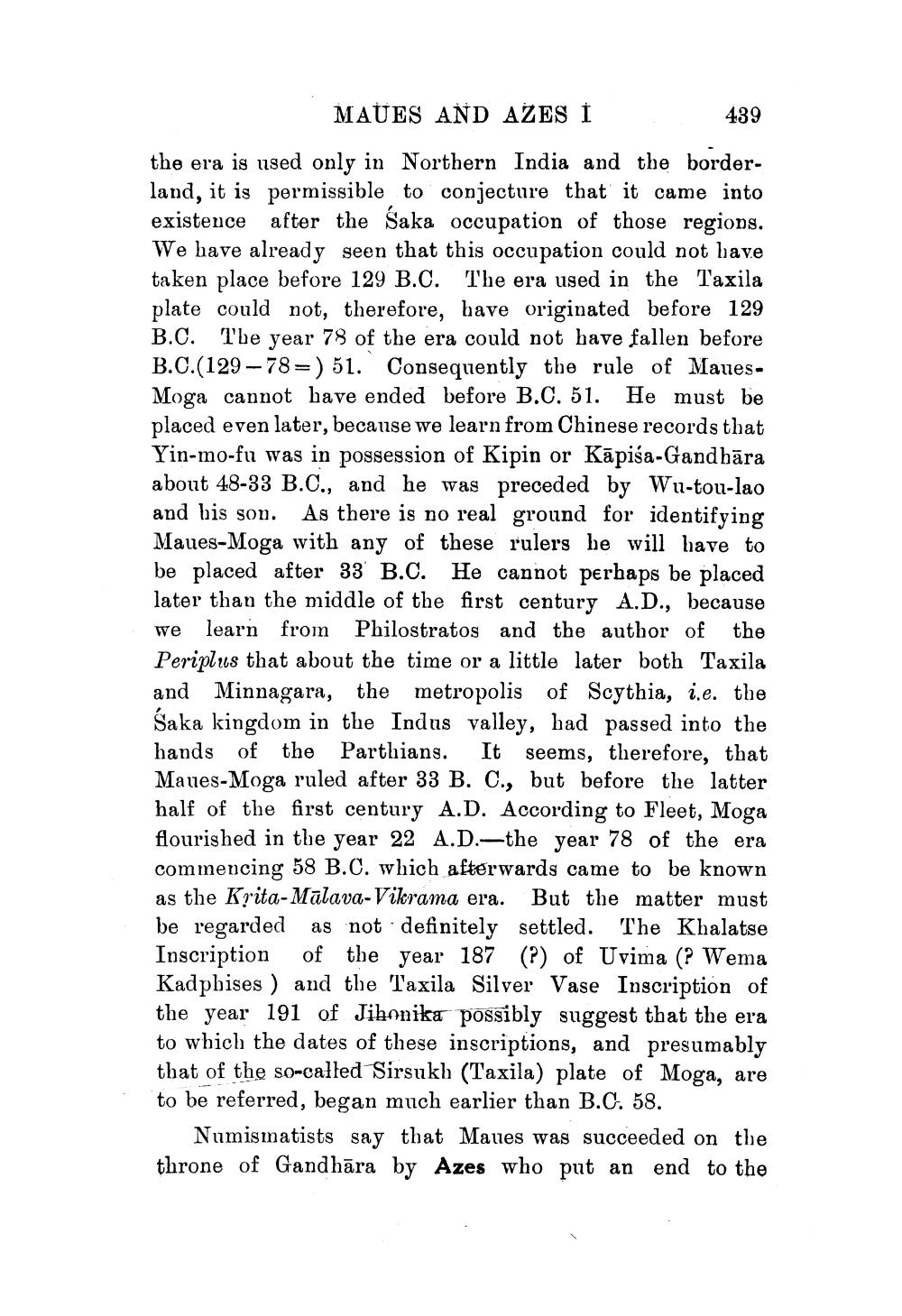________________
MAUES AND AZES I
the era is used only in Northern India and the borderland, it is permissible to conjecture that it came into existence after the Saka occupation of those regions. We have already seen that this occupation could not have taken place before 129 B.C. The era used in the Taxila plate could not, therefore, have originated before 129 B.C. The year 78 of the era could not have fallen before B.C.(129-78) 51. Consequently the rule of MauesMoga cannot have ended before B.C. 51. He must be placed even later, because we learn from Chinese records that Yin-mo-fu was in possession of Kipin or Kapiśa-Gandhāra about 48-33 B.C., and he was preceded by Wu-tou-lao and his son. As there is no real ground for identifying Maues-Moga with any of these rulers he will have to be placed after 33 B.C. He cannot perhaps be placed later than the middle of the first century A.D., because we learn from Philostratos and the author of the Periplus that about the time or a little later both Taxila and Minnagara, the metropolis of Scythia, i.e. the Saka kingdom in the Indus valley, had passed into the hands of the Parthians. It seems, therefore, that Maues-Moga ruled after 33 B. C., but before the latter half of the first century A.D. According to Fleet, Moga flourished in the year 22 A.D.-the year 78 of the era commencing 58 B.C. which afterwards came to be known as the Krita-Malava-Vikrama era. But the matter must be regarded as not definitely settled. The Khalatse Inscription of the year 187 (?) of Uvima (? Wema Kadphises) and the Taxila Silver Vase Inscription of the year 191 of Jihonika possibly suggest that the era to which the dates of these inscriptions, and presumably that of the so-called Sirsukh (Taxila) plate of Moga, are to be referred, began much earlier than B.C. 58.
439
Numismatists say that Maues was succeeded on the throne of Gandhara by Azes who put an end to the




